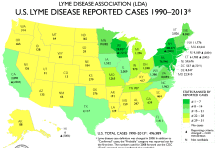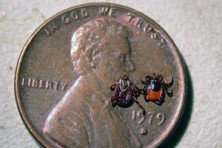New Legislation Bites Ticks Back
- Share
- Tweet
- Pin
- Share
Ticks become active beginning in May, and this year, for the first time, new legislation has been passed to try to bite the creatures back.
The Wisconsin Assembly passed two bills in January that require the state’s Department of Natural Resources (DNR) to warn visitors about the dangers of Lyme disease and to sell insect repellent at each state park, trail, recreation area and forest.
The measures were part of a Bite Back package the Senate had passed in October 2019 to combat black-legged ticks, also known as deer ticks. Infected deer ticks climb onto their human hosts from grassy, forested areas. Once aboard, they find a thin-skinned area, attach and feed on the human’s blood, transmitting the bacterium that causes Lyme disease.
Sen. Robert Cowles (R-Green Bay), whose District 2 includes Door County, sponsored the bills.
“I know a bunch of people who got it [Lyme disease], and a couple people got very sick,” Cowles said. “It’s out there and if you get it, it’s not good.”
One of the two bills appropriated $12,500 to create and post signs to inform visitors about how to prevent tick bites and encourage them to check for ticks. At least one sign is required to be posted by mid-summer in each of the state’s 49 state parks, 43 state trails, eight state recreation areas and 15 state forests.
The fiscal estimate of the second bill that requires insect repellent to be sold in state parks and forests came with a one-time startup cost of $15,000 to supply parks that don’t currently sell anything, and an annual cost of $20,000 for yearly bulk purchase and distribution.
The two bills were part of a four-bill package. The two that did not pass would have required informational brochures and established a 19-member tick-borne-disease study committee.
Cowles said the two bills that did pass the Assembly will offer better exposure and awareness about the dangers of ticks and Lyme disease, but he believes there’s more to be done.
“We succeeded partially,” he said. “I’m going to reintroduce a bill that would put it on the DNR website. There’s something on there now, but it’s very basic.”
In 2018, Wisconsin had an estimated 3,105 cases of Lyme disease. The average number of reported cases had more than doubled during the past 10 years. Door County is among the counties in the state reporting the highest incidences.


